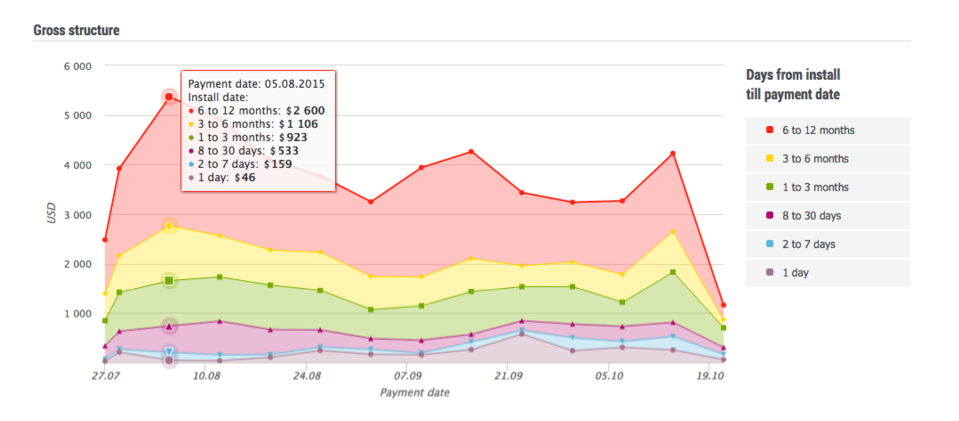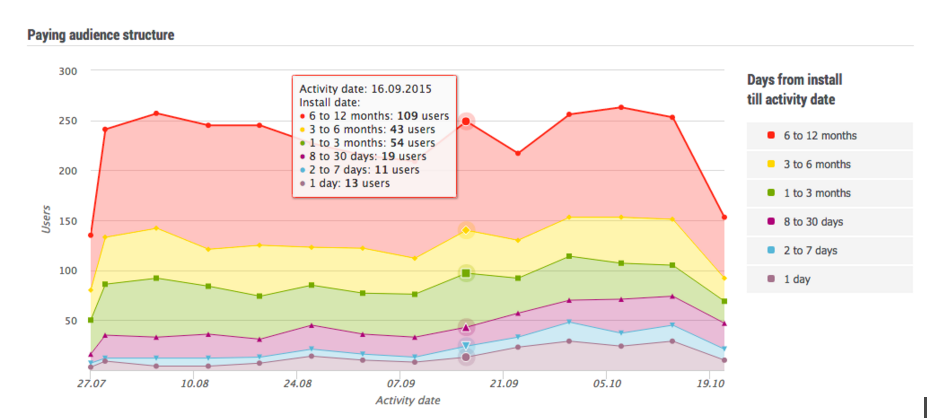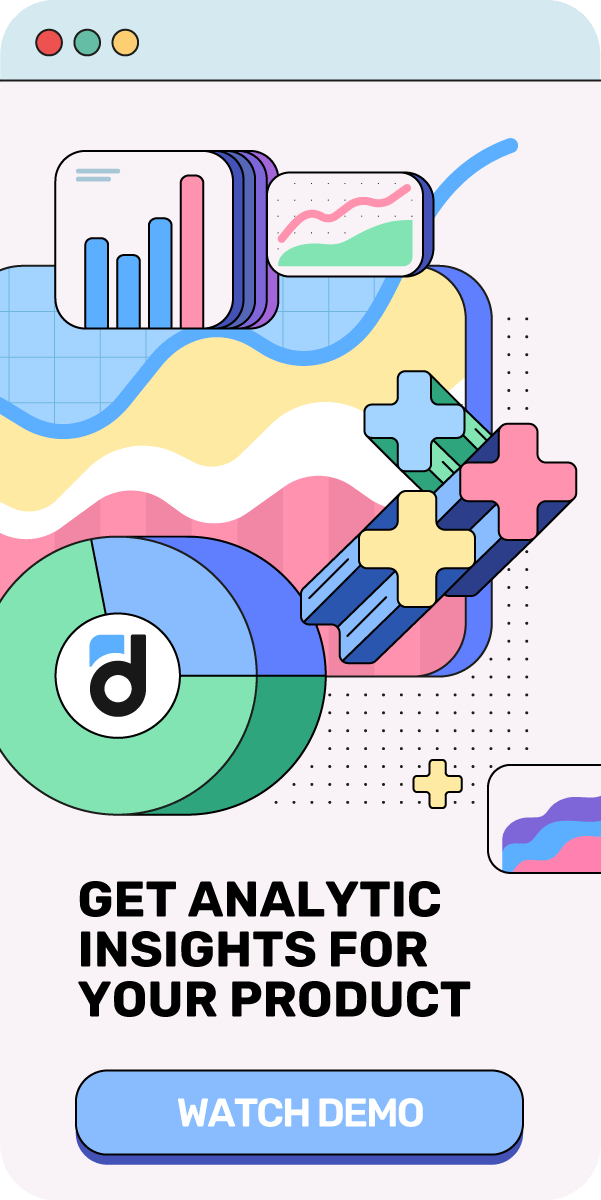Last time we were talking about segmentation of paying users, RFM-analysis, as well as whales and dolphins. This time, we will also use segmentation but on an entirely different principle.
Have you ever thought about the structure of your revenue? Who brings more money: the new users or the experienced ones? What is the ratio of the revenue from the new and the experienced users? How does it change over time? This is what we are going to talk about.
Structure of the Audience
At first, we divide our entire audience (both paying and free) into multiple segments depending on the moment of registration. It's up to you how to select segments: that decision depends on the nature of your business and the project engagement period.
Anyway, we recommend to start with 5-7 segments. Take the example:
- 1st segment – less than 14 days from the moment of registration;
- 2nd segment – from 14 to 30 days;
- 3d segment – from 1 to 2 months;
- 4th segment – from 2 to 6 months;
- 5th segment – from 6 months to 1 year;
- 6th segment – more than a year from the moment of registration.
By selecting custom segments, you can build a report on the structure of your audience. What this report shows:
- If the newcomers clearly dominate, then you have a retention problem. The project can not retain users long enough. That means that you have to either work on retention or think about monetization of the newcomers; for example, make the application paid one.
- If the experienced users clearly dominate, this is also not good. Is everything ok with the new users? Maybe it's time to buy a bit of traffic? Remember that more users means yet more users. And oldies do not go far – sooner or later, the app starts to lose rating.
The next step is to examine not only the structure of your audience but its dynamics and the structure changes over time. This is the place where the most interesting things show up.
Structure of the Paying Audience
Let's perform the same manipulations but now for the paying audience only, with the help of Users & Gross structure report.

This screenshot shows how the stability of the size of your paying audience hides the pitfalls, and the growth of one segment is offset by a decrease of other segments.
We see that the percentage of newcomers (less than 30 days from the moment of registration) is increasing, and the percentage of oldies (6 to 12 months from the moment of registration) decreases. Without the consideration of the structure, we would not notice this.
A sign of the healthy application is that the segment of the experienced users should be growing slowly - more and more users should reach this segment and stay there.
Structure of the Revenue
In a similar manner, revenue may be analyzed by cutting it into segments by the time from the moment of registration of paying users.
In the report on the structure of the revenue, all distortions for the benefit of oldies and newcomers are usually more vividly pronounced. The fact is that usually the average check of the newcomers is small while the average check of the oldies is large enough.

As we see, the revenue in our example has a downward trend; remember that the size of the paying audience, in this case, was stable. The decrease in this trend is primarily due to decrease in revenue from the oldies. Up to the green segment, inclusive, there is some stability, and then decrease occurs.
Our verdict on considered project is that the project has problems with payments from users who registered 3 months ago and earlier. It is necessary to optimize the long-term retention of the project so that the natural flow of users in the last segment exceeded the natural outflow.
Mathematical modeling
With the above reports, you will be able to create a mathematical model of predicting your revenue for a few months in advance.
What you have to do:
- estimate the size of each of the selected segments;
- for all segments calculate the probability of transition from the segment N to the segment N+1; what is the probability of the user being active during the month remains active the next month?
- calculate the average revenue per user (ARPU) of each segment.
By combining all these values in one model, you are able to predict how the structure of your audience and of revenue will change in a month or two, or three, or six, etc. Furthermore, this model allows you to calculate the various experiments with traffic and monetization.
Here are some of the questions that this model is able to answer:
- What if I disconnect the paid traffic channel and remain only on the virality? How will this affect my revenue in 12 months?
- What if I optimize retention (eg, 30 days retention) by 2%: how it will affect the structure of the audience and revenue?
- I'm going to make a change in game balance and thus raise the average check of the 80’s level user by 10%. By what percentage my revenue will change?
And so on.
We would like to convey to you one simple idea: it is important to study the structure of your audience and revenue by time from the moment of registration. This will help you to make more effective decisions, whether it's marketing, monetization or game design.
Next time we'll talk about repeating payments and conversion, so you'll be able to analyze your paying users full-scale.











































































































































































































































































































































